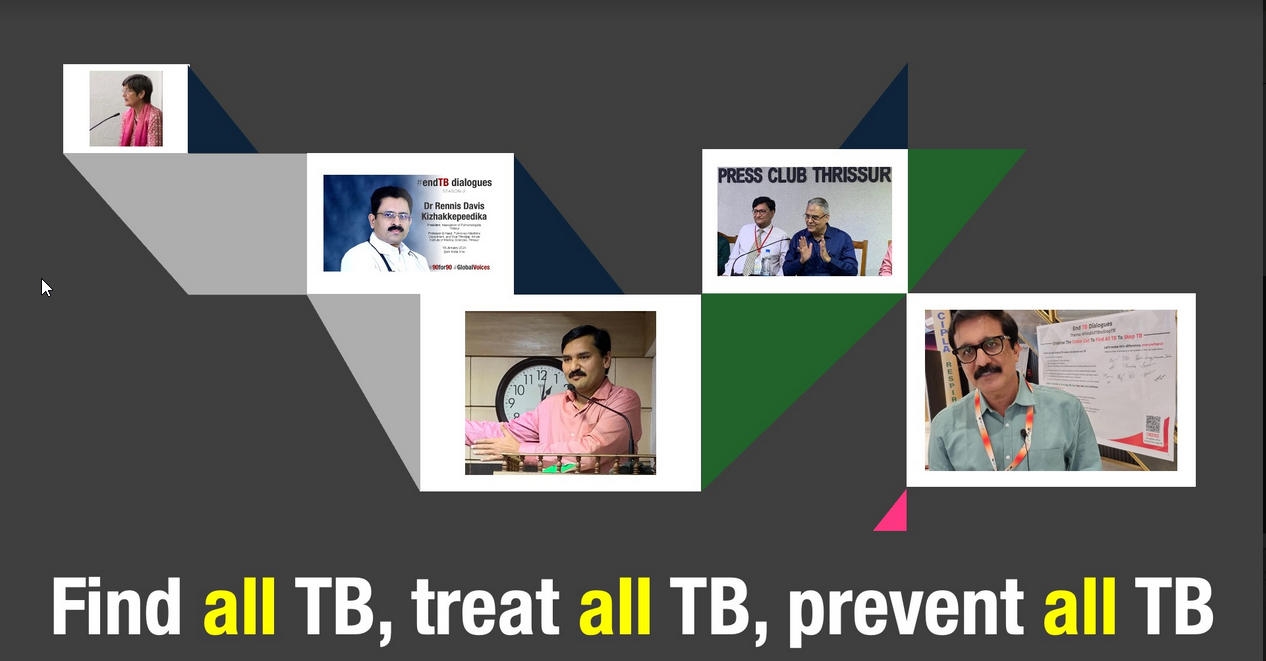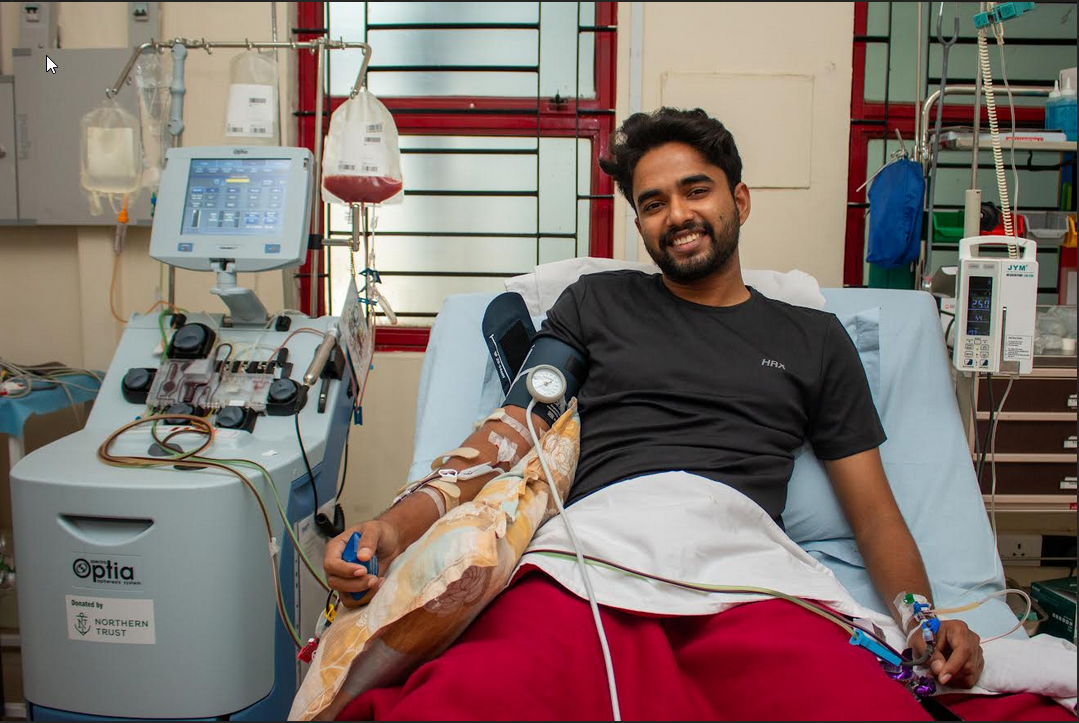|
Tue, Feb 27, 10:51 AM (13 hours ago) |
|
|||
Dear Editor, MediCircle,Please consider the below article in lead up to World TB Day 2024. When a person with TB disease of the lungs is put on effective treatment, soon after the person becomes non-infectious. Not diagnosing early and accurately (or not treating people) is not only causing avoidable human suffering but also failing us on stopping the spread of infection, says a range of top TB experts.Kind regards,Bobby/ CNS**************** Treatment is prevention: Stop the spread of infection by finding all and treating all TB SHOBHA SHUKLA, BOBBY RAMAKANT - CNS
"The greater danger for most of us is not that our aim is too high and we miss it, but that it is too low and we reach it.”
These golden words of Michelangelo perhaps sum up the fundamental gap in the fight to end TB worldwide.
The stark reality that around 3 million people were missed by TB services globally in 2022 (as per the latest WHO Global TB Report) reminds us once again that there is no place for complacency. We have to a) stop missing all TB cases and b) stop failing to link every person diagnosed with TB to care continuum.
The only pathway to end TB is to find all TB, treat all TB, and prevent any further transmission of TB infection.
“Once we diagnose a patient, we must treat them – which also stops the spread of infection. Finding all TB patients and putting them on effective treatment is the most important part of #endTB efforts,” said Dr Joju Pomson, a senior pulmonologist who has also served as District TB Officer and District Medical Officer in Kozhikode (Calicut) and Malappuram in Kerala.
Dr Pomson added: "If we do not find a person with TB, then the infection can further spread to another 10 people. That is why finding all TB cases, and treating all of them remains so fundamental. We must go for 100% detection of all estimated cases everywhere and put them on treatment, motivate them to finish the therapy and get cured. We also need to get the diagnosis closer to the people."
Offering a TB test to all the people is important in high burden settings
"We are seeing more TB cases as we are testing more. Our latest National TB Prevalence Survey shows that around 60% of patients who had TB showed no symptoms. If we take random x-rays of people, some are likely to have TB but no symptoms. Our motto is to - find all TB to eliminate TB,” said Dr Kuldeep Singh Sachdeva, who has earlier been the head of India’s TB elimination programme at the Ministry of Health and Family Welfare (as Deputy Director General – TB). Dr Sachdeva has also served as Southeast Asia Regional Director of International Union Against Tuberculosis and Lung Disease (The Union) and currently leads Molbio Diagnostics as President - Chief Medical Officer.
Agrees Dr Rennis Davis Kizhakkepeedika, President of Association of Pulmonologists Thrissur and Professor and Head, Pulmonary Medicine Department and Vice Principal, Amala Institute of Medical Sciences. “Findings of our national TB prevalence survey are an eye-opener as over half of TB patients would have been missed if x-ray screening was not done. We have a lot of undiagnosed TB in the population. I feel we have to get to the community level and find TB regardless of the 4 symptoms, as many may not have them. If we can reach the moon, then why cannot our TB and health services ‘reach the unreached’ at the community level?”
Ensuring that everyone gets screened for TB and all those with presumptive TB get a WHO recommended molecular test diagnosis is key to ending TB. We need to stop using TB tests like microscopy which underperforms in diagnosing TB and misses around half of TB patients, in addition to not being able to diagnose drug resistant TB.
That is why the WHO's highest level initiative Find.Treat.All (first launched in 2018) calls upon all governments to replace microscopy with upfront molecular testing completely. This call was also echoed by the world leaders at the United Nations General Assembly High Level Meeting on TB in September 2023. But, as per the latest WHO Global TB Report, more than half of those diagnosed with TB in 2022 did not receive a molecular test.
Screen everyone regardless of TB symptoms
As typical symptoms of TB may not be there in all people with TB, x-ray is the best screening tool recommended by the World Health Organization (WHO). We now have handheld battery-operated x-ray machines to screen for TB. We also have point-of-care, decentralised and battery-operated molecular tests for accurate diagnosis of all those screened for presumptive TB. We must replace microscopy with 100% upfront molecular testing – we are moving in this direction, but we have to increase the pace, said Dr Rakesh PS, who has earlier served the WHO as well as Kerala State TB Office, and is currently part of the Southeast Asia regional team of The Union.
“Community involvement is a must. We have to take help of people who have lived experience of going through TB disease. They are the ones who know the ground realities - what it is like to seek care, how to navigate through the health system, get diagnosed and be put on treatment. Science has gifted us tools to get correct and accurate TB diagnosis in one hour. But situation on the ground could be different. It may take a person many visits to the clinic /doctor (even months) to finally get a test done for TB,” added Dr Sachdeva.
Bridge the gap between what science has to offer and what reaches the people
“Our role as a community service organisation, is to bridge the gap between what science has to offer and what reaches the people. All of us are at risk of TB, but some- like migrants, homeless and slum dwellers- who we call the key vulnerable populations- are more exposed and vulnerable to it due to poor living and nutritional conditions. Many people in the community do not read newspapers and do not have access to media. Also, there is a lot of misinformation about TB. We can help at the grassroots by going from person to person and mobilizing communities to access services. People in the community should have access to correct information and create demand for the best tools to help find all TB,” said Lisbeth Aarup of Humana People to People India.
Dr Sachdeva, Dr Rakesh PS, and Lisbeth Aarup were among the panelists who spoke at a media workshop hosted by Kerala Union of Working Journalists Thrissur at Thrissur Press Club along with TB People (India) and CNS . Dr Joju Pomson and Dr Rennis Thomas K were featured in the End TB Dialogues at the 78th National Conference of Tuberculosis and Chest Diseases (78th NATCON).
Treatment is also prevention
Failure to find people with TB of the lungs will not only increase their human suffering but also infection will keep spreading from one person to another. Finding them - which means early and accurate molecular test diagnosis - and linking them to effective treatment, supporting them through the treatment and ensuring they get cured - is vital cog-in-the-wheel if we are to inch towards ending TB.
Treating latent TB infection is also preventing TB. More importantly, addressing risk factors of TB play a vital role in protecting people from getting infected in the first place. TB risk factors also increase the risk of people progressing from latent TB infection to active TB disease. These risk factors also make TB difficult to treat. As per the WHO, biggest risk factor for TB is undernutrition. Tobacco and alcohol use, diabetes, and HIV are some of the other major risk factors that put people at risk of TB. Comprehensive TB prevention campaigns that are evidence-based must be rolled out optimally to protect people from TB. Also we must remember that protecting people from malnutrition, tobacco, alcohol, HIV or diabetes would be a major boost for public health and sustainable development.
Doing drug susceptibility testing (DST) - a test which informs if the medicines used to treat TB, work on the TB bacteria (or is the bacteria resistant to one or more of them?), is also necessary. All persons diagnosed with TB must be put on appropriate treatment with drugs that are effective to treat TB in them. Otherwise not only the person keeps suffering from TB but the infection will also keep spreading. Dr Mario Raviglione, former Director of WHO Global TB Programme had said to CNS ten years ago that not doing DST upfront is a clinical malpractice. We need to make universal DST for all the medicines used in the treatment a reality on the ground.
Join the call to find all TB, treat all TB and prevent all TB
One hundred and forty nine TB experts at the conference endorsed a global call to find all TB to stop TB (www.bit.ly/findalltb ), which has 1 key ask: Stop missing TB cases, by taking 2 actions:
1) Replace smear microscopy 100% with WHO recommended molecular tests as soon as possible, along with a paradigm shift from a lab-centric to a fundamentally people-centric model to find TB, leaving no one behind
2) Find the missing millions! Screen everyone (and not just those with TB symptoms) in high burden settings with WHO recommended screening tools, and confirm those with presumptive TB using molecular tests.

 The greater danger for most of us is not that our aim is too high and we miss it, but that it is too low and we reach it. These golden words of Michelangelo perhaps sum up the fundamental gap in the fight to end TB worldwide.
The greater danger for most of us is not that our aim is too high and we miss it, but that it is too low and we reach it. These golden words of Michelangelo perhaps sum up the fundamental gap in the fight to end TB worldwide.










.jpeg)



.jpg)





.jpeg)

.jpg)





.png)

